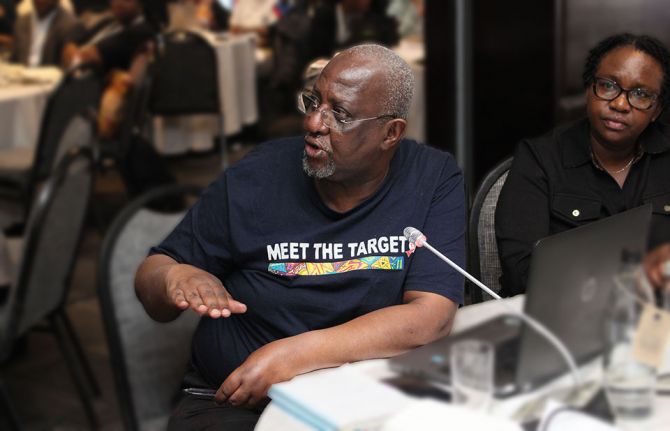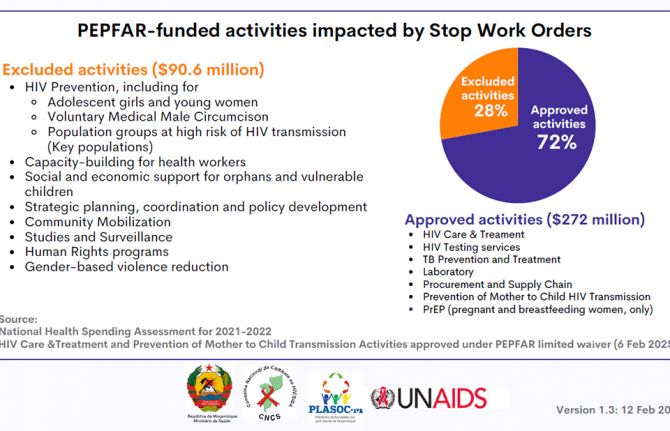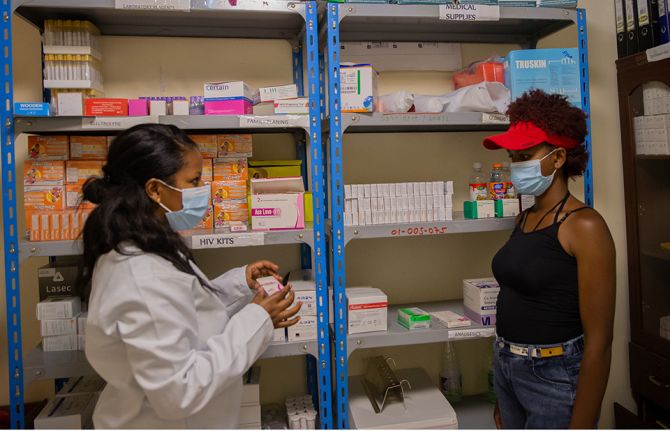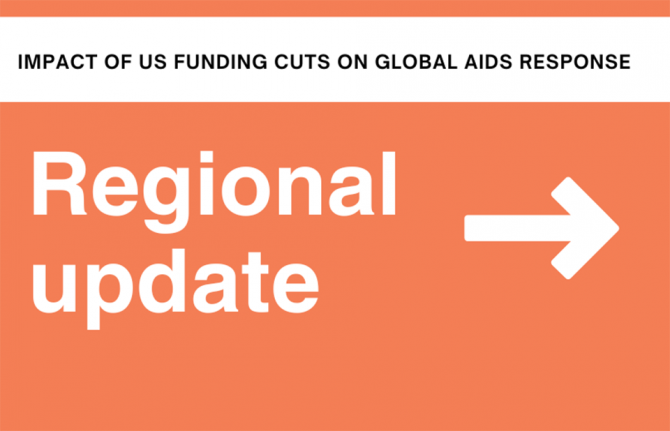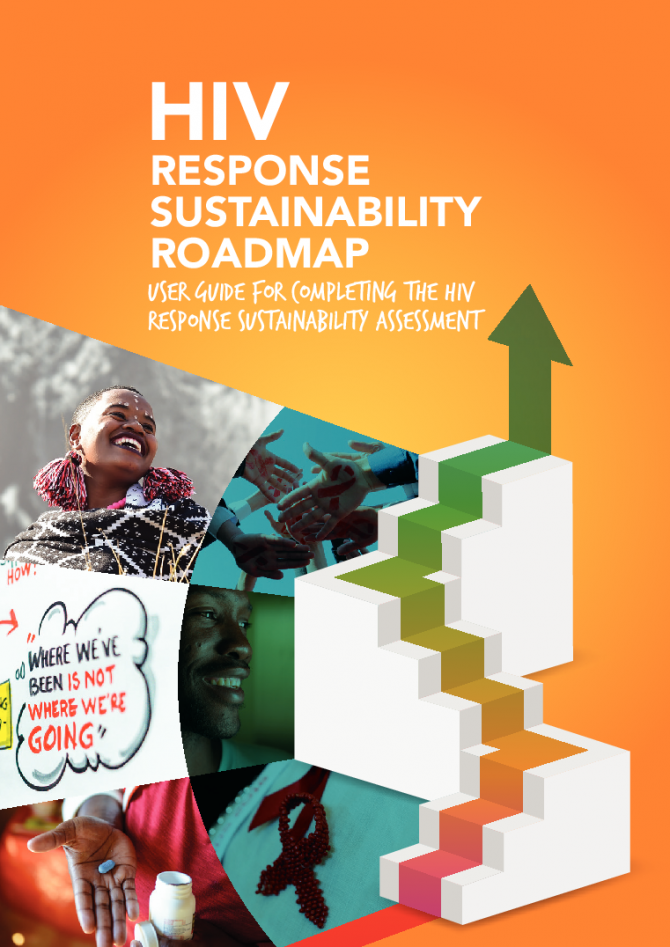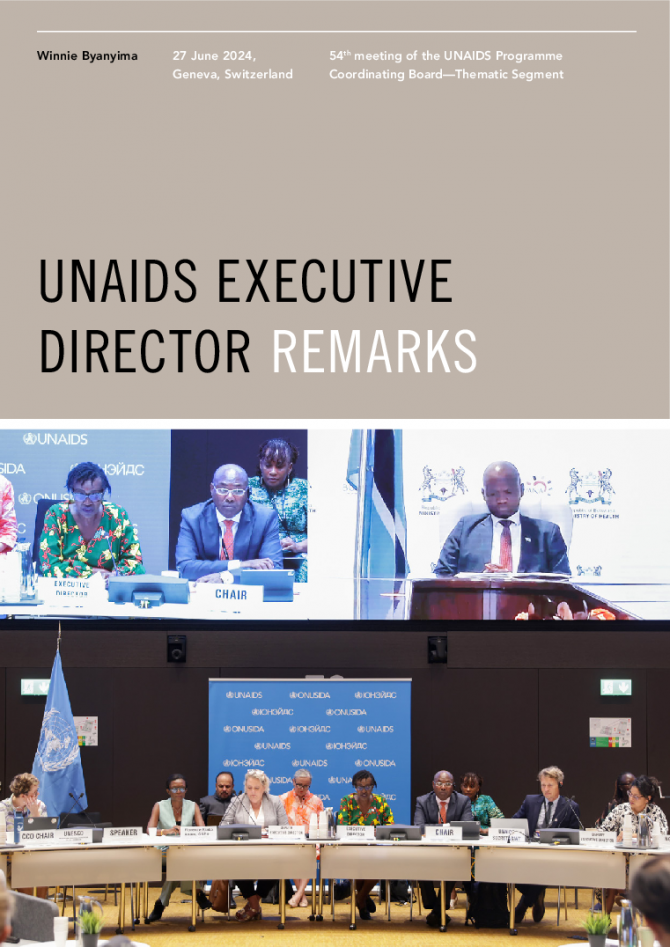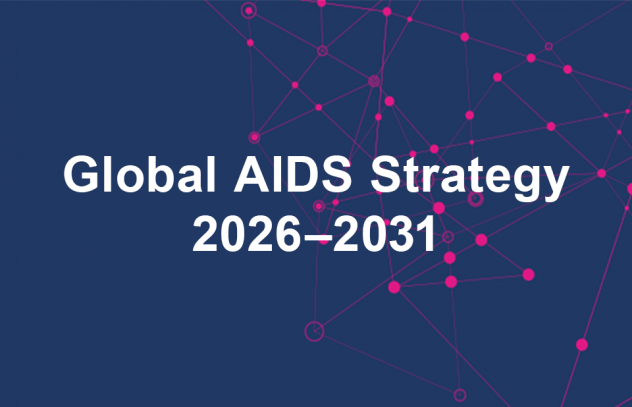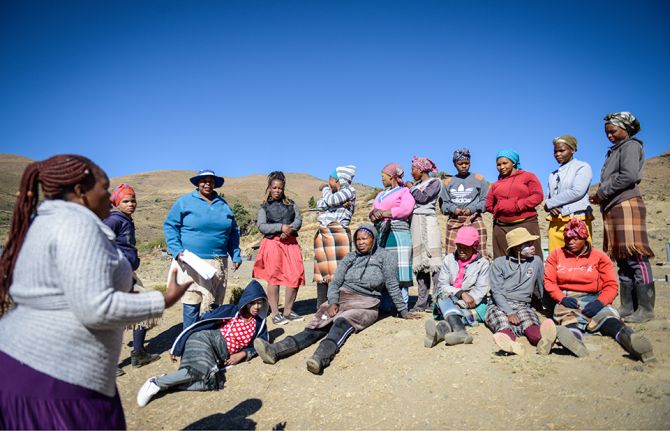
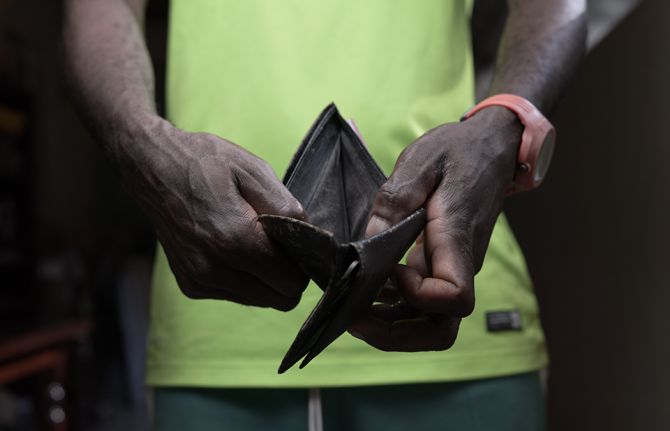
Feature Story
Debt crisis threatens progress in the response to AIDS
20 March 2025
20 March 2025 20 March 2025The significant health progress made over the past decade in Central, Eastern, Southern and West Africa—where many countries were on track to ending their AIDS epidemics—is now at risk of being reversed due to inadequate financing. One of the major causes of the funding shortfall is rising debts.
In 2020, as the Covid-19 pandemic halted economies and overwhelmed emergency rooms, many African countries borrowed from creditors to provide emergency services to their citizens. But four years later, the terms of those loans are forcing governments to make debt payments at the expense of health and other social services. Nearly two thirds of people living with HIV reside in countries that have not received significant debt relief post-Covid.
In West and Central Africa, debt to GDP ratios increased by 9 percent between 2018 and 2023. Countries such as Burkina Faso, Burundi, the Republic of the Congo, Côte d’Ivoire, Ghana, Liberia, Senegal and Sierra Leone have seen significant rises in their debt burden, now reaching at least 15% of GDP.
In East and Southern Africa, the situation is even more dire: in Angola, Kenya, Malawi, Rwanda, Uganda and Zambia, governments spend over 50 percent of their tax revenues on debt servicing. Many of these debts are from external private creditors seeking unreasonable profits – for example, one creditor in Zambia would make a 110 percent profit if the country paid back its debts. (As context, even highly profitable companies like Apple do not have profits that surpass 48 percent.)
Despite Zambia successfully reaching a debt restructuring deal with official creditors, effectively getting some debt relief last year, it’s still slated to pay two-thirds of its budget towards debts over the next two years largely due to not yet reaching a deal with private-creditors. On the ground, crises are already proliferating; hospitals lack essential medicines and equipment. Labor unions and health activists have rallied across Lusaka demanding debt cancellation.
“Countries are facing life and death decisions,” said Charles Birungi, who leads UNAIDS’ work on macroeconomic and fiscal policy. “Do I pay for hospitals, medicines and education – or do I pay my debt? What if paying my debt means that my hospitals go without drugs?”
Two recent UNAIDS reports focusing on Eastern and Southern Africa and on Western and Central Africa outline that the future of funding for the HIV response in many African countries, as well as broader health and social welfare, rests on innovative measures to ensure governments can invest their own tax revenue for citizens.
“Progress is being made in the fight against HIV in both regions,” said one of the report authors and development finance specialist Gail Hurley. “Of course there were setbacks, including those related to Covid-19, but external funding and strong political commitment has provided a solid foundation to build on. Countries now need partial or even whole scale debt relief in order to achieve global health goals.”
Debt relief is especially critical for countries that want to move away from relying on international donors to finance their HIV responses. In East and Southern Africa, for instance, most HIV financing comes from two donors: the US President’s Emergency Plan for AIDS Relief (PEPFAR) and the Global Fund to fight AIDS, Tuberculosis and Malaria (which is also heavily supported by the US government). But without debt relief, countries cannot invest tax revenue in health systems.
Based on extensive consultation with economists and policy experts, UNAIDS has called for lenders and international institutions to re-negotiate debt payments to comprise at least less than 15 percent of respective countries’ annual budgets. Such a policy for the heavily indebted countries of Angola, Burundi, Ethiopia, Kenya, Madagascar, Malawi, Mozambique, South Sudan, United Republic of Tanzania, Uganda, Zambia and Zimbabwe would free up $41 billion a year for health, education and social welfare. The strategy has a precedent: the Heavily Indebted Poor Countries (HIPC) Initiative, launched in 1996 by the IMF and World Bank, aimed to ensure that states did not struggle under an unmanageable debt burden. It took a similar approach and relieved 37 countries of more than $100 billion in debt.
UNAIDS also recommends that governments increase tax revenue through measures like raising the income tax of the ultra-wealthy, wealth taxes, reducing tax exemptions and clamping down on tax-dodging. Amnesty International estimates that Zambia, for example, loses over USD 4.5 billion annually through tax evasion and tax avoidance.
Another option not included in the reports but recommended by UNAIDS’s partner WHO is a ‘health tax’ on products that lead to or exacerbate health issues, including sugary beverages, tobacco and alcohol. In 2023, WHO called on all countries to increase taxes on alcohol and sugary drinks (and has previously suggested taxes on tobacco). These monies could then be re-invested in health systems.
But UNAIDS cautions that even raising tax revenue will not be enough to address funding gaps unless it goes hand in hand with debt reduction. Without swift changes to enable African governments to invest in health, Birungi fears what the future could hold. “What happens if we wake up tomorrow and the donors are gone?” he asked. “Will we go back to the 80s and 90s when people were dying in massive numbers?”
In 2025, for the first time, the G20 is chaired by an African nation: South Africa. President Cyril Ramaphosa has set debt as one of the priorities for action of the G20 Ministers of Finance. Former South African Finance Minister Trevor Manuel has been appointed to chair the newly established G20 Africa Expert Panel, an international commission of experts to advance proposals. UNAIDS will join efforts with other UN agencies and experts such as Nobel Prize laureate Joseph Stiglitz, co-chair of UNAIDS sponsored “Global Council on Inequality, AIDS and Pandemics”, to advocate for fair financing and debt resolution mechanisms to be advanced in the G20 this year.
Related resources
Related

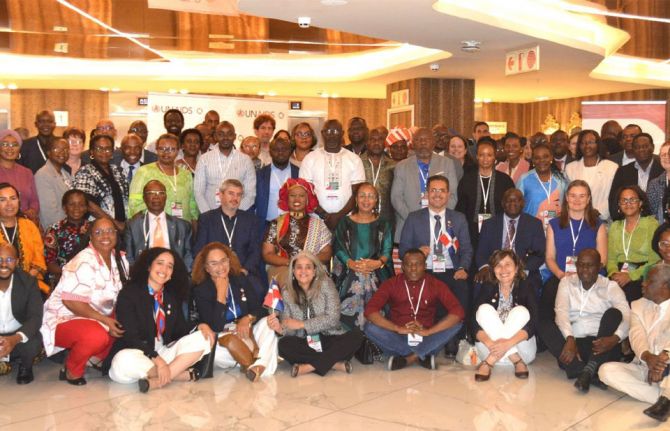
Feature Story
Building country-led sustainable HIV responses
20 December 2024
20 December 2024 20 December 2024What does the HIV response look like beyond the 2030 targets to end AIDS? For the past year, UNAIDS has been working with partners and over 30 countries to develop country-led roadmaps for the sustainability of HIV prevention, treatment and care services far into the future.
Part of the sustainability journey includes reaching the global goal of ending AIDS in the next five years. According to a recent World Bank report, despite an early COVID-19 spending peak, per capita government health spending has steadily declined in low- and lower middle-income countries. Urgent action is needed in many countries to ensure reaching the health Sustainable Development Goals remains possible by 2030.
UNAIDS’s new sustainability approach, developed jointly with the US President’s Emergency Plan for AIDS Relief (PEPFAR) and the Global Fund to Fight AIDS, Tuberculosis and Malaria (GF) in early 2024, focuses on five core areas. These are political leadership and commitment; enabling laws and policies; sustainable and equitable financing; science-driven, effective and high-impact HIV services and solutions; and systems built to deliver. The specific methods look different in each country, but all have equity and communities at the center.
“A multi-sectoral approach remains critical to the HIV response particularly in this last mile as we accelerate prevention and close gaps that require us to address the complex inequalities that persist,” said Anne Githuku-Shongwe at UNAIDS.
As part of this initiative, UNAIDS and partners are supporting countries to create and implement sustainability roadmaps. The roadmaps identify key changes countries can take to shift towards self-reliant, efficient and impactful HIV responses both in the short- and long-term.
Representatives from 22 countries in Sub-Saharan Africa and the Dominican Republic gathered recently in Johannesburg, South Africa to hone their roadmaps during a workshop hosted in October by The South African National AIDS Council in collaboration with UNAIDS, PEPFAR and the GF.
“While it is valuable that we come together to learn and share insights, it is crucial to recognize the level of responsibility each of us carries in our respective countries. We are not here simply to exchange ideas, but to take on a leadership role in driving meaningful change,” said Thembisile Xulu of the South African National AIDS Council as she addressed the participants.
During the workshop, countries shared experiences and learned from each other about their individual sustainability journeys. In addition, countries agreed to establish a virtual peer learning network to facilitate future cross-border partnerships and share successes and challenges in moving towards sustainability. Some of the findings so far along the journey include the necessity of high-level political support, coordinated multi-sectoral efforts and diversified funding sources.
Furthermore, countries recommended that development partners craft consistent messages about their ongoing commitment levels to fund HIV and health services. The need for transparent, responsible and inclusive conversations was emphasized by all in Johannesburg when discussing the transition from donor financed to country financed responses.
“The fiscal space for HIV is tightening, and we need to be pragmatic as we work to sustain the response with a focus on simplification and efficiency,” said Sarah Dominis from the U.S. State Department Bureau of Global Health Security and Diplomacy, Office of Financial and Programmatic Stability. “The future HIV response will be led by country governments in partnership with community and private sector partners. PEPFAR is not going away but will focus on supporting countries to sustain the HIV response, aligning to the vision they have committed to in their roadmaps.”
As the roadmaps roll out publicly, governments are recognizing the role of communities in the long-term response. For example, Tanzania’s roadmap identifies that community-led organizations play a pivotal role in community mobilisation, facilitating social and behaviour change, addressing social/cultural norms, primary HIV prevention interventions, adherence to antiretroviral treatment and retention in care. As a result, the roadmap lists actions to bolster communities, such as scaling up the network of community health workers and reinforcing community-led monitoring programs.
“When we talk about HIV sustainability we need to go back to the basics. It's about planning around the lives of PLHIV. Communities are always at the centre of service delivery, demand creation and monitoring. There is the opportunity for us all to tap into the infrastructure and willingness of communities to provide treatment and prevention services - through strong sustainable partnerships,” said Sibongile Nkosi from The Global Network of People Living with HIV.
This past World AIDS Day, ten countries launched their sustainability roadmaps, and more will follow in early 2025. To follow the process, visit: https://sustainability.unaids.org/
Related documents
Related

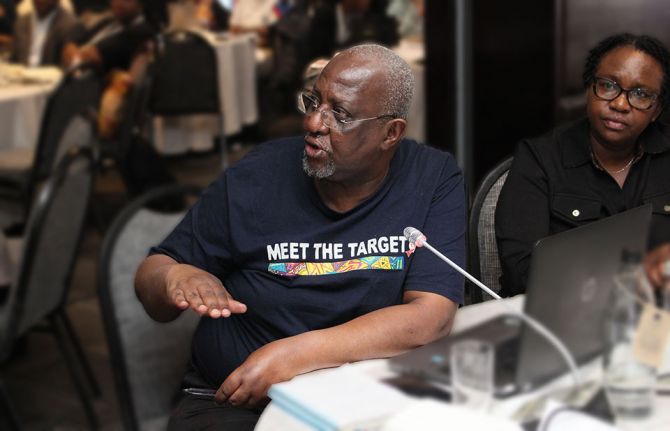
Feature Story
HIV financial data: A transformative power to ensure sustainability of the AIDS response
19 December 2024
19 December 2024 19 December 2024Progress towards ending AIDS as a public health threat has been strongest in the countries and regions with sufficient investments in their HIV responses, especially in countries from eastern and southern Africa. However, a critical part of this success lies in understanding where resources are being allocated and ensuring that investments are directed towards the most impactful interventions.
“HIV financial data is essential for decision-making”, said Jaime Atienza, Director of Equitable Finance at UNAIDS. “This is especially important when we can see constraints, now and around the corner.”
To reflect on the current use and future potential of HIV financial data, UNAIDS and the Global Fund to Fight AIDS, TB and Malaria brought together representatives from 10 African countries to Cape Town, South Africa. During the event, countries shared how they are using HIV financial data to transform their national HIV responses.
In the case of Kenya, for example, the 2022 National AIDS Spending Assessment (NASA) revealed that approximately 84% of the funds for care and treatment programmes came from external sources. This heavy reliance on external funding prompted the development of a cabinet advisory note on local commodity manufacturing, aimed at addressing commodity security risks. In response, the Office of the Presidency issued a statement on Worlds AIDS day 2022 directing that the government would support the pharmaceutical sector to strengthen its local manufacturing capacity and review relevant regulations and tax policies to create an enabling environment.
In Mozambique another NASA study showed how the country spent 26% less on HIV treatment than the National Strategic Plan required, while still surpassing the antiretroviral (ART) coverage target. ART unit costs have fallen from US$ 208 in 2017 to US$ 137 in 2022—well below most countries in the region. Economies of scale and differentiated service delivery likely contributed to this outcome. “We are using this data to inform multi-sectoral plans and state budgets” said Francisco Mbofana, Executive Secretary of Mozambique's National AIDS Council.
HIV financial data is also seen by countries as an effective tool for mobilizing resources. Ethiopia’s NASA and National Health Accounts (NHA) informed a Domestic Resource Mobilization Strategy. The Strategy aims to boost domestic investment from US$ 27.9 million in 2020 to US$ 68.5 million by 2025 through government revenues, AIDS fund(s), targeted mainstreaming, community care coalitions, and earmarked taxes. In addition, South Africa demonstrated to the Global Fund that of the US$ 6.3 billion the government committed to invest in HIV from 2022-2025, US$ 6.2 billion (98.99%) is likely to be realized. This, in turn, unlocks the US$ 92.7 million co-financing incentive from the Global Fund grant for 2025-2028.
Financial data has also stressed the major underinvestment in HIV prevention. “The de-prioritization of HIV prevention is among the top sustainability threats,” said Thembisile Xulu, Chief Executive Officer of the South African National AIDS Council. While prevention will require a third (32.8%) of total HIV resources by 2025, NASA data shows current HIV prevention spending is at 9.4% in Kenya, 9% in Namibia, 11% in South Africa, and 13% in Uganda.
Nonetheless, several strategies to boost HIV prevention investments are being developed following evidence provided by HIV financial data. Kenya used its NASA data to develop guidelines for harnessing resources from construction projects to support HIV prevention. Zimbabwe’s resource tracking influenced a new policy to implement social contracting with a least one civil society organization per province, to channel domestic resources to community-led HIV responses. Zimbabwe has committed to invest 21% of domestic funds in HIV prevention, with a focus on key populations.
In the current environment of dwindling resources for HIV—2023 recorded the lowest amount of resources available for HIV in low-and-middle income countries in a decade—strengthening HIV resource tracking is key to ensure effective and sustainable HIV responses. “We need to plan for sustainability,” said Nertila Tavanxhi, Senior Manager for Health Financing Country Support at the Global Fund. “To do this, we really need to understand who is funding what, where and whom. This will show us the gaps, and where we must focus.”
“We are in a time of transformations towards sustainability,” said Mr Azcona. The National HIV Response Sustainability Roadmaps are an essential part of the work that the Global Fund, UNAIDS, PEFPAR and country partners are undergoing in 2024 and 2025. “This makes it even more important to have the right data to make the best possible choices on what these transformations must be.”
Related
 “Who will protect our young people?”
“Who will protect our young people?”

02 June 2025
Documents
Thematic segment ‘Sustaining the gains of the global HIV response to 2030 and beyond’
27 June 2024

Feature Story
Mountaintop moment: Ensuring a sustainable AIDS response beyond 2030
27 June 2024
27 June 2024 27 June 2024Key figures in the AIDS response came together at the 54th meeting of the UNAIDS Programme Coordinating Board (PCB) to discuss how to ensure that the gains from the HIV response can be sustained beyond 2030.
During the PCB’s thematic segment, participants heard that the aim of sustainability is not to maintain the HIV response in its current form but to ensure the durability of the impact of the HIV response. This will require a shift in focus to long-term sustainability.
“Until there’s a cure or a vaccine, we will need to sustain the AIDS response beyond 2030, in every part of the world, in the north and in the south,” said Winnie Byanyima, UNAIDS Executive Director. “Sustainability is at the heart of the vision of the Sustainable Development Goals (SDGs), with the commitment that the needs of the present are met without compromising the ability of future generations to meet their own needs.”
Remarks echoed by Florence Anam, co-Director of the Global Network of People Living with HIV (GNP+), “People living with HIV will be here in 2031 and beyond so for us the sustainability of the HIV response is a journey of transformation and not a destination with an end date,” she said. “It matters that at the center of this process of change, mechanisms are in place for all who need treatment and prevention services and that this care is inclusive, devoid of stigma and discrimination.”
The strategies and delivery mechanisms required for scaling up prevention and treatment services and to ensure a stable enabling environment to reach the 2030 target will differ from those that will be needed for long-term sustainability. Leveraging societal enablers will be especially critical for sustainability, including minimizing HIV vulnerability and ensuring access to services in future decades. Rather than build incrementally on what is already in place, sustainability will demand transformations in human rights based, people-centred policies, programmes and systems.
In addition, sustainability requires action on the political, financial, and programmatic front – and across sectors. Not only health, but also gender equality and education so that the economic and societal drivers of new infections are tackled.
Michelle Bachelet, former President of Chile, in a video statement, said, “The combination of shared responsibility and country leadership is essential. Developing countries need to own the response and increase their self-reliance but global action is required to create an enabling environment for this to happen.”
Countries are being advised to prioritize the careful and effective integration of the HIV response in national health systems, with appropriate attention to reforms or modifications required for key and vulnerable populations. This transformation will increase efficiency, promote equity, maximize resource utilization and contribute to the dual goal of achieving and sustaining HIV epidemic control and strengthening human rights based, people-centred systems for health.
Together with its co-sponsors, partners such as PEPFAR and the Global Fund, and other stakeholders, the Joint United Nations Programme on HIV/AIDS are supporting countries to develop roadmaps to sustain their national AIDS responses.
"Sustainability road maps are critical, starting with the vision,” said Peter Sands, the Global Fund Director. “Strategic financing then needs to support the path to that vision, focused both on continuing to raise resources as well as using those that are available more efficiently. To optimize HIV and primary health care integration requires well- coordinated partnerships between governments, private sector companies, international organizations, and non-government organizations.”
John Nkengasong, U.S. Global AIDS Coordinator and head of PEPFAR, also stressed that gains in the HIV response are fragile and need to be sustained. "Today we find ourselves at a crossroads to 2030 where we go somewhere or we go nowhere,” he said. “2030 is critical because at that point the global community regardless of where people are sitting, either say we have done our best and we don’t know what else to do or do we say, ‘Yes, we can get to the finish line’...2030 is a mountaintop moment.”
Finally, sustainability will also require adapting measures and approaches in diverse settings, highlighting the importance of tailoring planning and implementation for specific contexts.
Related

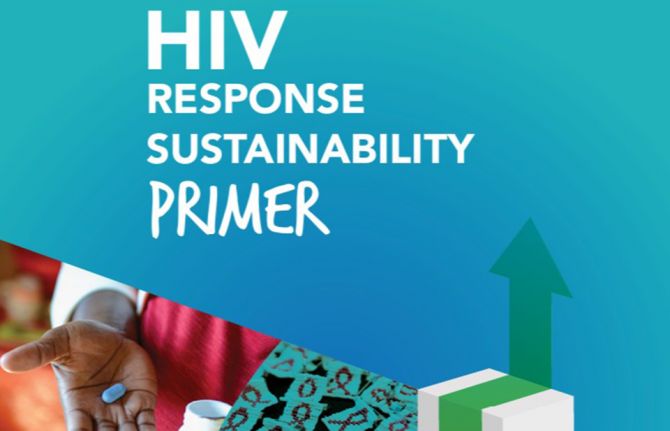
Feature Story
UNAIDS launches new approach to ensure the long-term sustainability of the HIV response
19 January 2024
19 January 2024 19 January 2024As countries work to reach the goal of ending AIDS as a public health threat by 2030, planning is urgently needed for sustaining the gains from the HIV response beyond 2030.
With that in mind, UNAIDS has released the “HIV Response Sustainability Primer” which proposes a new approach to ensure the sustainability of the HIV response. This holistic approach includes programmatic, political, policy-related and financial aspects of the HIV response. The new Primer provides the rationale, the definitions, and an in-depth explanation of this new sustainability approach.
“The moment is right, the imperative is now, the global HIV community must come together to dialogue about what is needed to sustain the HIV response by and beyond 2030,” says Jaime Atienza, Director of Equitable Financing at UNAIDS. “We are calling on leaders to initiate national conversations about the future state of a sustained HIV response, and the transformations needed to achieve and sustain impact, by and beyond 2030, including looking at the policy changes, donor commitment and investments needed to translate them into results and concrete changes at country level.”
The goal of sustainability is not to perpetuate the HIV response in its current form. Rather, it is to ensure the durability of the impact of the HIV response. This will require a shift in focus to long-term sustainability. Transformative action, starting now, will be needed to make this a reality by and beyond 2030.
For instance, the strategies and delivery modalities required for scaling up prevention and treatment services and to ensure a stable enabling environment to reach the 2030 target will differ from those that will be needed for long-term sustainability. Leveraging societal enablers will be especially critical for sustainability, including minimizing HIV vulnerability and ensuring access to services in future decades. Rather than build incrementally on what is already in place, sustainability will demand transformations in human rights based, people-centred policies, programmes and systems.
Sustainability will require different measures and approaches in diverse settings, highlighting the importance of tailoring planning and implementation for specific contexts. Therefore, this Primer outlines a new approach to planning for and implementing sustainable national HIV responses—to reach global AIDS targets and maintain the gains of the HIV response beyond 2030.
Through country driven and owned processes that leverage specific data, countries will develop HIV Response Sustainability Roadmaps which will chart the pathways for country level strategies and actions to achieve and sustain impact, leaving no one behind. The stages and ways of developing these Roadmaps are also contained in the “HIV Response Sustainability Primer”.
The Sustainability Roadmap will be distinct from, yet complimentary to, National Strategic Planning exercises (NSPs). Each country’s Roadmap should be a living document, allowing for the continual reassessment and evolution of HIV interventions, programmes and policies as contexts and circumstances change.
As a key transformation required for long term sustainability, countries are advised to prioritize the careful and effective integration of the HIV response in national systems, with appropriate attention to reforms or modifications required for key and vulnerable populations. This transformation will increase efficiency, promote equity, maximize resource utilization and contribute to the dual goal of achieving and sustaining HIV epidemic control and strengthening human rights based, people-centred systems for health.
The process for developing the HIV Response Sustainability Roadmaps is aligned with the principles, goals and targets set out in the Global AIDS Strategy 2021–2026 and in the 2021 Political Declaration on Ending AIDS. International partners will support country driven processes through the provision of technical support, including a series of resources described in this Primer.
The proposed new approach to sustainability outlined in this newly released Primer will require all participants, including international actors, to be ready to undergo transformations on the way they have been carrying forward the response to better prepare for the post 2030 world.
To support such actions, sustainability will be at the top of UNAIDS priority agenda in 2024. Together with its co-sponsors, partners such as PEPFAR and the Global Fund, and other stakeholders of the Global HIV community, UNAIDS is resolute in its commitment to supporting countries leverage the tools and analytics, the lessons learned, the science of what works where, to foster open and honest dialogue on the future of the HIV response, the transformations needed to ensure that responses across the globe are not in danger of putting millions of lives and livelihoods at risk and the financing commitments needed for scale and impact.
Resources
Related

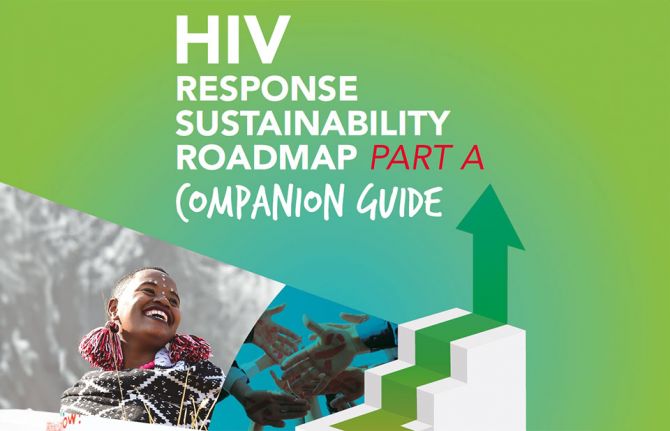
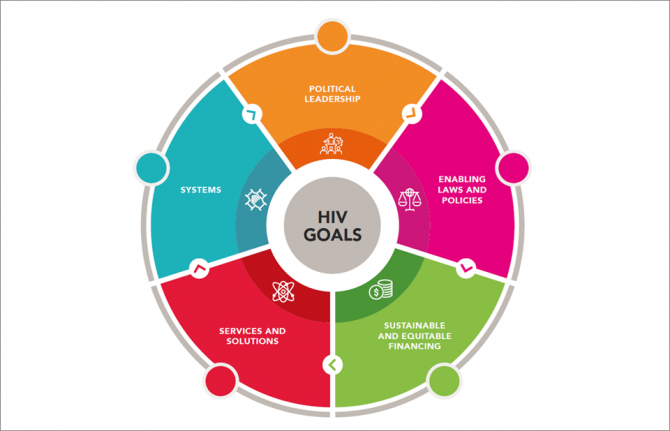
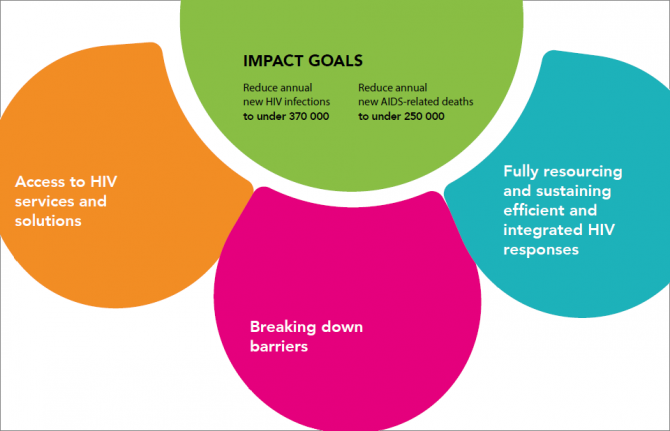
Feature Story
UNAIDS – planning for sustainability of the HIV response up to and beyond 2030
30 April 2024
30 April 2024 30 April 2024There are more people than ever before living with HIV and in need of lifelong treatment (39 million in 2022), with this number set to rise in the coming years. Ensuring long-term resourcing is vital.
However, resources for HIV are severely constrained. In 2022, US$ 20.8 billion was available for HIV programmes in low- and middle-income countries––2.6% less than in 2021 and well short of the US$ 29.3 billion estimated to be needed by 2025. In addition, UNAIDS estimates that in 2022 there was a 90% shortfall in funding for HIV prevention among key populations most affected by HIV, including men who have sex with men, sex workers and people who inject drugs.
As countries work to reach the goal of ending AIDS as a public health threat by 2030, planning is urgently needed to protect and build on the HIV gains made to date, increase efforts to reach people most affected by HIV, and to sustain the HIV response into the future.
This is why UNAIDS has developed an HIV sustainability framework which includes transformations in policy, programmes and systems to sustain the HIV response beyond 2030. To ensure success in sustaining the HIV response, UNAIDS is supporting all stakeholders on long-term planning.
“As the global community pushes towards the ambitious goal of ending AIDS as a public health threat by 2030, a crucial conversation is needed now on how to sustain the hard-won gains of the HIV response well beyond 2030,” said Winnie Byanyima, Executive Director of UNAIDS. “A paradigm shift is needed to ensure the long-term sustainability of the HIV response, a journey that demands transformative action starting today.”
To support countries and partners in implementing the Sustainability Framework as outlined in the UNAIDS HIV response sustainability primer, UNAIDS has released a new Companion Guide which includes country-specific analytical resource packages and a sustainability assessment tool. These resources will serve as tools to help countries and partners develop roadmaps and navigate the path towards sustainability.
The companion guide offers flexible stepwise methodology, allowing each country to tailor the sustainability framework to its unique context. With practical tools and insights, it serves as a compass for initiating and guiding the roadmap development process.
“Developing sustainability roadmaps is key to the HIV sustainability framework and will empower countries to navigate the complex terrain of sustainability,” said Angeli Achrekar, Deputy Executive Director for Programme, UNAIDS.
The country analytical resources package features granular data tables, graphics, and essential fiscal and macroeconomic metrics, broader health system analytics and additional qualitative information. The package serves to facilitate sustainability dialogues essential for planning that fits each country's epidemic characteristics and broader economic and health system landscape.
Central to this journey is also the sustainability assessment tool. This tool empowers stakeholders to identify and address risks across political, structural, financial, and programmatic domains. It also facilitates the discovery of new strategies to enhance the HIV response and drive continuous improvement towards 2030 and beyond.
“Through its intuitive interface, the sustainability assessment tool will help countries understand how to ensure that their HIV response is sustainable – identify the big milestones needed and to organize how to get there,” said Christine Stegling, Deputy Executive Director, Policy, Advocacy and Knowledge Branch, UNAIDS.
Sustainability to 2030 and beyond will require strong political leadership across multiple sectors, and the active engagement of people living with HIV and of key and vulnerable populations. Resources will need to be mobilized from both domestic and international sources, and flexibility and resilience will be required as epidemics evolve, and shifts occur in changing economic, political and social contexts.
UNAIDS will work side by side with countries and partners to enable them to successfully implement the new sustainability framework, so that all people living with and affected by HIV can continue accessing the lifesaving HIV services they need, have their rights protected, and be able to thrive.

